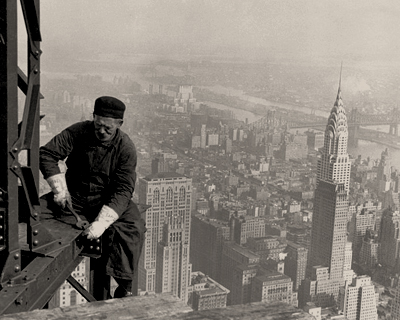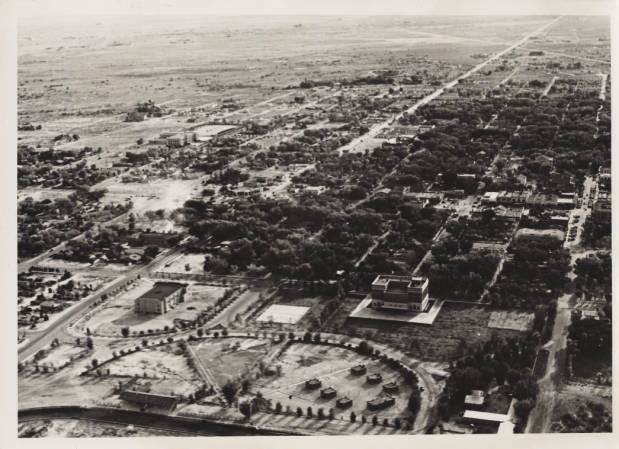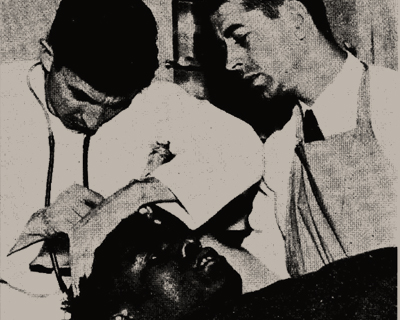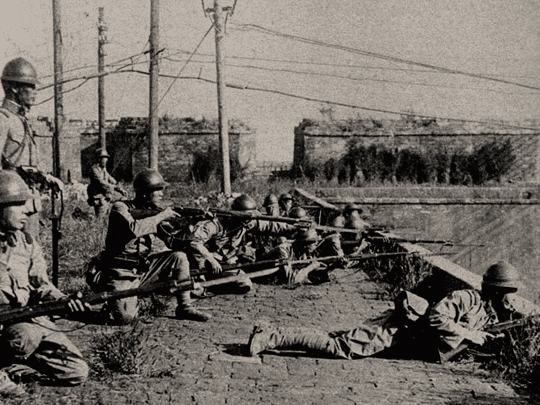Wikimedia Commons / CC-BY-SA-3.0 / GFDL
1 – The Mukden Incident Begins Japanese Occupation of Manchuria
The Mukden Incident was a staged event engineered by Japanese military personnel as a pretext for the Japanese invasion in 1931 of northeastern China, known as Manchuria.
On September 18, 1931, Lt. Suemori Kawamoto detonated a small quantity of dynamite close to a railway line owned by Japan’s South Manchuria Railway near Mukden (now Shenyang).
The explosion was so weak that it failed to destroy the track and a train passed over it minutes later.
However, the Imperial Japanese Army accused Chinese dissidents of the act and responded with a full invasion that led to the occupation of Manchuria, in which Japan established its puppet state of Manchukuo six months later.
The ruse of war was soon exposed to the international community, leading Japan to diplomatic isolation and withdrawal from the League of Nations in March 1933.
2 – The Empire State Building is Completed

The Empire State Building is a 102-story skyscraper located in Midtown Manhattan, New York City, on Fifth Avenue between West 33rd and 34th Streets.
It has a roof height of 1,250 feet, and with its antenna spire included, it stands at 1,454 feet high.
Its name is derived from the nickname for New York, the Empire State.
It stood as the world’s tallest building for nearly 40 years, from its completion in early 1931 until the topping out of the original World Trade Center’s North Tower in late 1970.
Following the September 11 attacks in 2001, the Empire State Building was again the tallest building in New York, until One World Trade Center reached a greater height in April 2012.
3 – Nevada Legalizes Gambling

In 1931, Nevada legalized most forms of gambling when Assembly Bill 98 was signed into law, providing a source of revenue for the state.
Interest in development in the state was slow at first as the state itself had a limited population.
After World War II, enforcement of gambling laws became more strict in most places and the desert town of Las Vegas became an attractive target for investment by crime figures such as New York’s Bugsy Siegel.
The town rapidly developed during the 1950s dooming some illegal gambling empires such as Galveston. Nevada and Las Vegas, in particular, became the center of gambling in the U.S.
In the 1960s Howard Hughes and other legitimate investors purchased many of the most important hotels and casinos in the city gradually reducing the city’s connections to organized crime.
4 – Scottsboro Trial Begins, Exposing Depth of Southern Racism

The Scottsboro Boys were nine black teenagers falsely accused in Alabama of raping two White American women on a train in 1931. The landmark set of legal cases from this incident dealt with racism and the right to a fair trial.
The cases included a lynch mob before the suspects had been indicted, a frame-up, all-white juries, rushed trials, and disruptive mobs. It is frequently cited as an example of an overall miscarriage of justice in the United States legal system.
On March 25, 1931, several people were hoboing on a freight train traveling between Chattanooga and Memphis, Tennessee. Several white teenagers jumped off the train and reported to the sheriff that they had been attacked by a group of black teenagers.
The sheriff stopped and searched the train at Paint Rock, Alabama and arrested the black Americans. Two young white women also got off the train and accused the black teenagers of rape.
The case was first heard in Scottsboro, Alabama, in three rushed trials, in which the defendants received poor legal representation.
All but 12-year-old Roy Wright were convicted of rape and sentenced to death, the common sentence in Alabama at the time for black men convicted of raping white women. Medical evidence suggested that they had not committed the crime.
The case was sent to the US Supreme Court on appeal. It ruled that African Americans had to be included on juries, and ordered retrials. Charges were finally dropped for four of the nine defendants. Sentences for the rest ranged from 75 years to death.
All but two served prison sentences. One was shot in prison by a guard and permanently disabled. Two escaped, were later charged with other crimes, convicted, and sent back to prison.
Clarence Norris, the oldest defendant and the only one sentenced to death, “jumped parole” in 1946 and went into hiding. He was found in 1976 and pardoned by Governor George Wallace.
By now, the case had been thoroughly analyzed and shown to be an injustice. Norris later wrote a book about his experiences. He died in 1989.
